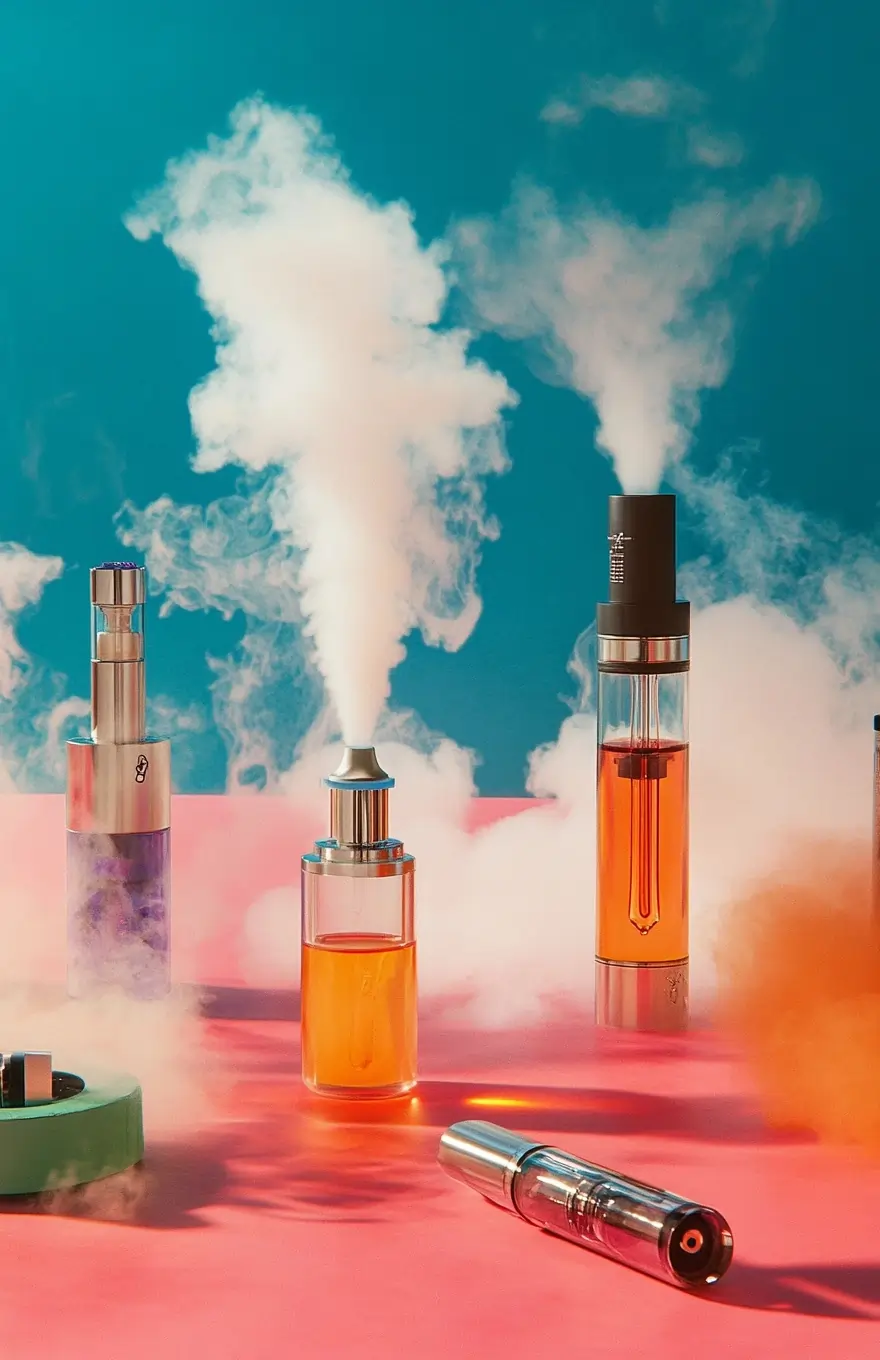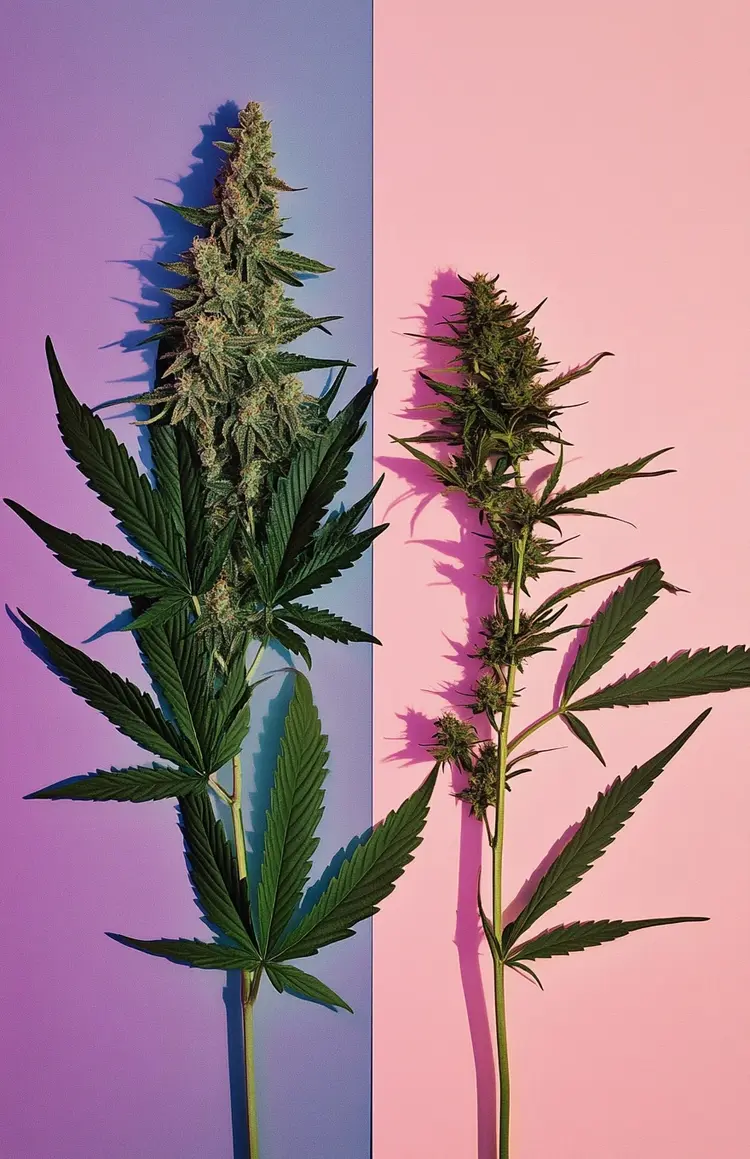

Many people are familiar with cannabidiol, better known as CBD. It holds a considerable level of fame due to the many potential benefits that it can offer. However, there is another chemical compound with a very similar name that most people haven’t heard of: CBDa. What’s the difference between CBDa vs CBD? Well, let’s find out!
CBDa and CBD have more similarities than differences. They are closely related. In fact, CBDa is the chemical predecessor to CBD! The science is simpler than you might imagine. Join us as we break down these two extraordinary compounds.
CBDa stands for cannabidiolic acid. It is a natural compound in the cannabis plant (scientific name: Cannabis sativa). If you didn’t know, there are two kinds of cannabis plants: hemp and marijuana. Marijuana plants contain high levels of THC and THCa, while hemp plants contain high CBD and CBDa.
Scientists have known about CBDa for decades, but it was not until 1996 that a cannabis scientist managed to isolate it from the hemp plant. Unlike CBD, CBDa is a very unstable compound. This means that it degrades rapidly, greatly reducing its potency. This makes it very difficult to produce CBDa products efficiently.
Like CBDa, CBD belongs to a category of chemical compounds called cannabinoids that naturally occur in cannabis plants. Other cannabinoids include Delta 9 THC, Delta 8 THC, CBG, and HHC.
CBD is a particularly notable cannabinoid due to its potential benefits. CBD and other cannabinoids interact with your body’s endocannabinoid system (ECS) receptors. The ECS regulates some of the most vital neural and physiological functions, including:
CBD supports your body’s cannabinoid receptors to support the ECS. This gives it numerous beneficial properties. We will discuss the benefits and effects of CBD in a later section. First, let’s talk about how it compares to CBDa.

CBDa and CBD are not exactly the same thing, but they are very closely related. When you compare the molecular structure of CBDa vs CBD, you can see how similar they are. The difference is that CBDa contains more oxygen and hydrogen atoms.
CBDa is one of the three major cannabinoid precursor compounds along with THCa (tetrahydrocannabinolic acid) and CBCa (cannabichromenic acid). Don’t worry about those last two now because we’re focusing on CBDa. When you expose CBDa to heat, it loses the additional oxygen and hydrogen atoms to become CBD. You can think of CBDa as a caterpillar and CBD as the butterfly it grows into.
CBDa shows promise in many areas, but scientists aren’t 100% sure about its effects because research only began recently. It appears to have many similar benefits as CBD, which we will discuss in the next section. However, there’s no telling what future CBDa research may uncover.
You might be wondering why we know so much less about CBDa than we know about CBD. There’s a simple reason for that. Up until the mid-2000s, scientists believed that CBDa was an inactive compound. They didn’t bother to study it, focusing all of their attention on CBD. However, with CBD becoming more accepted worldwide, research on the compound may follow.
CBD has numerous potential benefits based on its interactions with the cannabinoid receptors in your ECS. Here are some of the effects that make CBD so popular:
We have great news for you! CBD presents very rare and minimal side effects. In the few instances where consumers experience unwanted effects, they are mild and pass quickly. Potential side effects include:
In the rare cases where people experience these side effects, it is usually because they took more CBD than necessary. As long as you stick to the right amount, you should be all clear. How can you tell how much CBD you should take? Check out this handy chart on our website to help you determine the right amount of CBD for your needs!
Distinguishing CBDa vs. CBD may be difficult for some, as they are very closely related. This may surprise you, but cannabis plants do not directly produce CBD. Instead, they produce CBDa, which converts into CBD through various means.
Earlier in this article, we compared CBDa to a caterpillar and CBD to the butterfly it grows into. Of course, to make that transition, the insect needs to spend some time in a cocoon. Similarly, CBDa must go through a conversion process to become CBD. In our butterfly analogy, the CBD equivalent of a cocoon is a process called decarboxylation.
Decarboxylation uses heat to convert CBDa into CBD. Remember the big difference between CBDa vs CBD is that CBDa is very unstable, so it is sensitive to temperature. The raw form of CBDa naturally converts into CBD slowly over time if you expose it to room temperatures. However, that is a very slow process. Decarboxylation speeds it up.
When smoking cannabis flower, the heat from your lighter automatically decarboxylates the CBDa, so the smoke you inhale contains active CBD. For other cannabis products, such as CBD vapes, topical creams, and hemp oil, decarboxylation is part of the manufacturing process.
As far as the effects of CBDa vs CBD, there’s a lot we don’t know yet. Scientists didn’t start researching CBDa until the last few decades, as we previously went over. It appears that CBDa has the same essential benefits as CBD. Some believe CBDa may be more potent than CBD, but this is unconfirmed. Since CBDa converts into CBD during manufacturing or consumption, it’s hard to distinguish between the two compounds’ effects.
You can find CBDa in hemp products, but it won’t be much. CBDa is abundant in raw cannabis plant material, but it changes during decarboxylation. The manufacturing and consumption processes replace CBDa with CBD, meaning you won’t get much CBDa with any CBD product.
Some manufacturers produce products like CBDa oil. They claim these products are effective, but there is some question whether that is true. Earlier in this article, we explained that CBDa is not a stable compound like CBD. This means that it degrades, losing its potency very quickly. Products with CBDa only tend to have short shelf lives and lower efficacy.
CBDa and CBD are sort of like successive generations of the same chemical. Remember that CBD comes from CBDa and does not occur on its own in hemp plants. The CBDa research we have so far tells us that it has the same essential benefits as CBD, so it doesn’t add much, if anything, to the product. You can find all the benefits you’re looking for in CBD products, even when they have low amounts of CBDa!
By now, you are probably wondering how to determine the levels of CBD and CBDa in your hemp products. Fortunately, you can find that exact information in a COA. What in the world does that mean? Let us explain.
COA stands for Certificate of Analysis. Reputable hemp companies like Hollyweed send their products to third-party labs for quality control. The lab runs tests to determine the cannabinoid content of each product. They record those results in COAs, so if you want to know the CBD and CBDa potency of our products, just check the COAs on our website.

Hollyweed is an esteemed leader in the hemp e-commerce industry. Customers love our commitment to natural and organic ingredients. To learn more about our reputation, check out the hundreds of 5-star reviews that we have gotten on third-party sites like Google, Trustpilot, and the BBB (Better Business Bureau).
Wondering between CBDa vs CBD? Why not both! We carry a diverse array of products with multiple cannabinoids. Our CBD products are fan-favorites, but there is so much more to discover. We now carry products with Delta 8 THC and HHC! Here are some of our best-sellers.
Our products aren’t the only great part of Hollyweed. We also offer an unparalleled customer experience. Every order comes with free shipping and a 30-day money-back guarantee. If you want to maximize your savings (and who wouldn’t?), you can sign up for our special subscriber deals. Sign up to receive regular shipments of your favorite Hollyweed products and save 25% on each order!
Now that we have gone over the differences in CBDa vs CBD, you will make wiser choices when shopping for hemp products. A lot of people think that CBDa is completely different than CBD. In reality, CBDa “grows up” to become CBD through decarboxylation, combining time and heat. You can never really have CBDa on its own because it automatically becomes CBD during manufacturing and consumption.
There may be some unique advantages to CBDa vs CBD, but it’s hard to say for sure without intensive research on this matter. Since CBDa degrades quickly, it may not be a wise investment. Your best bet is to stick with tried and true CBD products. Visit the Hollyweed shop today to stock up!